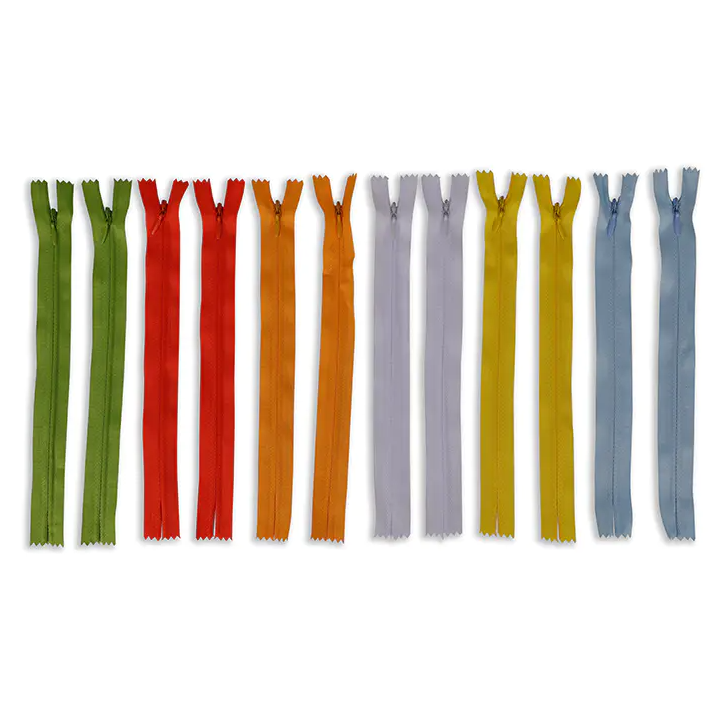In the garment and textile accessory industry, the #3 invisible zipper holds a steady position as a widely used fastening solution for dresses, skirts, trousers, and home textiles. A crucial component in the production of invisible zippers is the cloth edge, which plays a significant role in both functionality and appearance. From a manufacturer's perspective, producing a reliable #3 invisible zipper cloth edge involves careful attention to material selection, processing techniques, and quality control.
The cloth edge of an invisible zipper must provide both flexibility and strength to support the zipper chain while remaining discreet when applied to garments. Typically made from polyester, nylon, or a blended fabric, the material must exhibit consistent weaving and dyeing characteristics to maintain uniformity across large production batches.
Manufacturers must pay close attention to the selection of yarn and fabric construction. The density and texture of the cloth edge influence the sewing performance during garment assembly. A cloth edge that is too rigid may cause difficulty during stitching, while one that is too soft can compromise the hold of the zipper chain, leading to durability issues in the finished product.
The production process for the #3 invisible zipper cloth edge involves several stages, beginning with weaving or knitting the base fabric, followed by dyeing, heat setting, and cutting. Each step must be carefully managed to control fabric shrinkage, color consistency, and edge smoothness.
Heat setting is a particularly important step, as it stabilizes the fabric dimensions and ensures that the cloth edge retains its shape during zipper assembly and garment application. Improper heat setting can lead to fabric distortion, affecting the final alignment and appearance of the zipper when installed.
After heat setting, the cloth is precisely cut to match the specific width and shape required for the zipper type. Automated cutting equipment is commonly used to achieve clean, even edges, minimizing the risk of fraying and ensuring efficient sewing performance.
Maintaining quality consistency is a priority throughout the production of zipper cloth edges. Manufacturers implement routine checks for fabric density, color accuracy, width tolerance, and surface finish. Visual inspections are conducted to detect defects such as uneven dyeing, surface marks, or edge irregularities.
Additionally, strength tests are performed to evaluate the tensile properties of the cloth edge, ensuring that it can endure the stresses encountered during sewing and daily use without tearing or fraying. The smoothness and flexibility of the cloth edge are also tested to verify compatibility with sewing machines and garment fabrics.
For manufacturers of #3 invisible zippers, producing a reliable and consistent cloth edge requires a combination of material knowledge, precise processing techniques, and stringent quality control. As fashion trends and garment materials evolve, the demand for adaptable and dependable zipper components continues, driving manufacturers to refine their processes and develop cloth edges that meet both functional and aesthetic standards in the global textile market.
